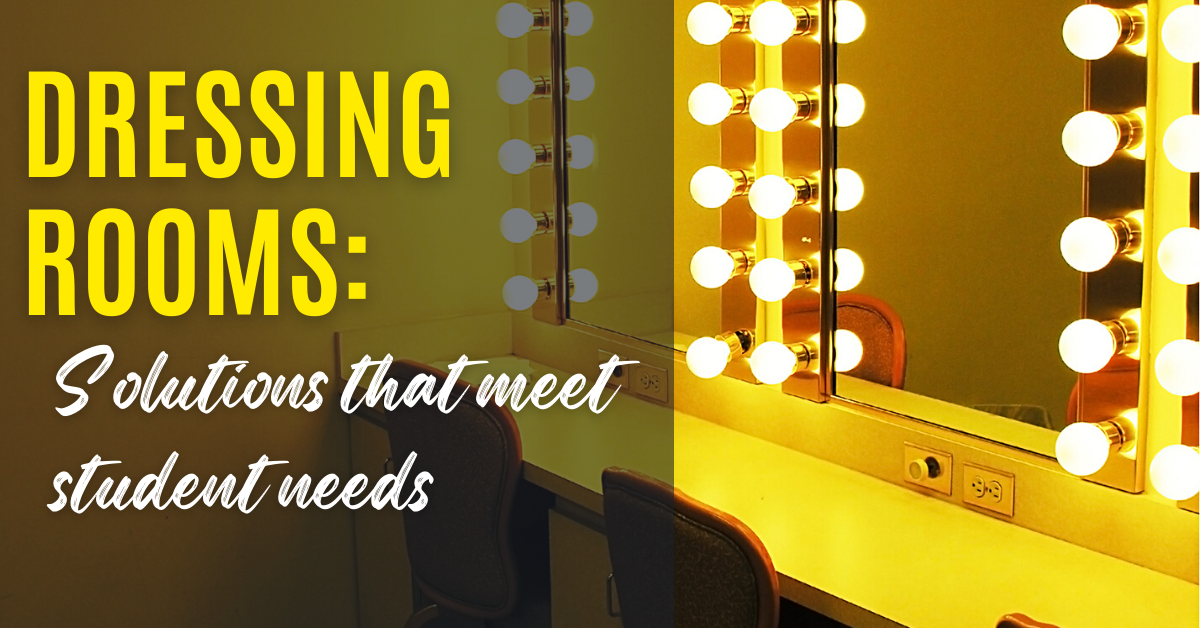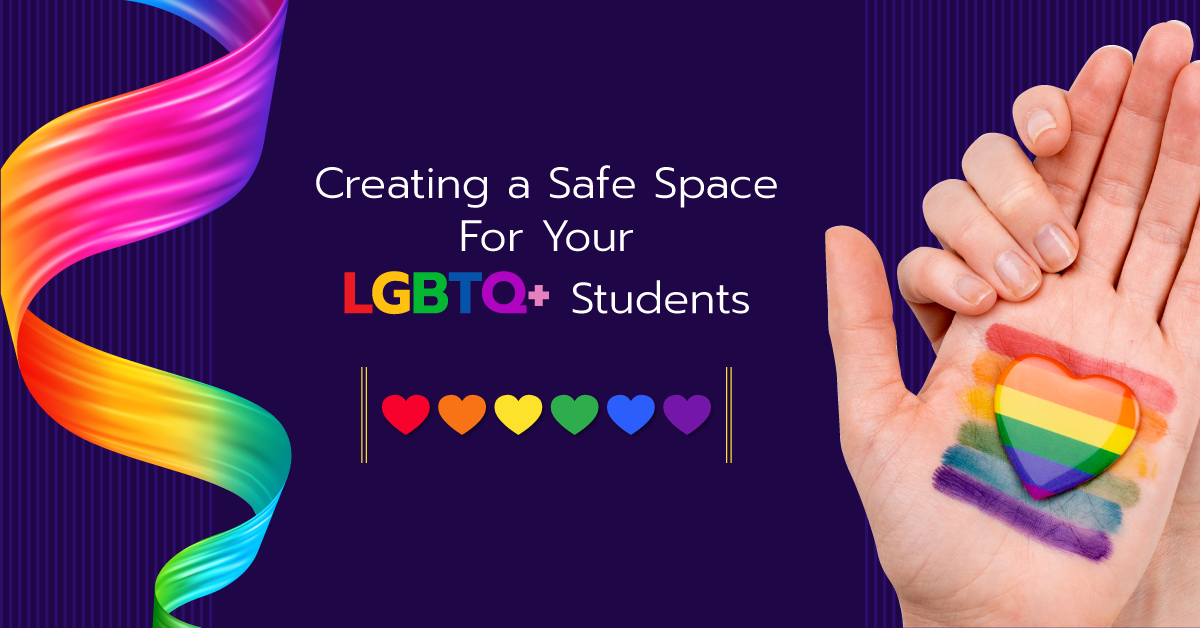Agatha Rex by Lindsay Price is a bold high school take on Antigone - packed with heart, conflict, and a powerhouse ensemble. One girl. One stand. One huge risk. *NEW COMPETITION VERSION AVAILABLE!*
Dressing Rooms: Solutions that Meet Student Needs
Let’s talk about dressing room setups. When your students are getting ready for a show, are they comfortable with their changing facilities? Does your setup meet the needs of all your students? What’s your policy on student privacy?
There are many reasons why a student might need a different dressing room setup without being singled out in the process. You may have trans and non-binary students. You may have students who are uncomfortable changing in front of others because of modesty concerns or body image issues.
Many students need a private space to change, so put an option in place before it becomes necessary. Make the option commonplace and available to all students, regardless of their reason.
We went straight to the source to get the inside scoop from those who’ve been there: drama teachers.
We asked: When getting ready for a show, how do you make your actors comfortable and not single anyone out? How do you address students who want privacy for changing? What solutions have you tried?
Separate stalls
I worked in a youth theatre that simply had one big dressing room area with several stalls for changing. (Picture the changing stalls when you try on clothes in a store.) It was great! Everyone had privacy to change and everyone was together in the dressing room area to do makeup and such. There was no need for binary male/female spaces. (Jennifer R.)
We’ve made these pop-up changing rooms available to anyone who would like to use them. (Laura M.)
Editor’s note: Need a simpler/cheaper solution? If you have drop ceilings, you can push sheets between the metal grid and the ceiling tiles to make your own pop-up changing room. You can also put a clothes hanger in the ceiling and hang a sheet off of it, or ask parents for pop-up shower tents.
Student choice
Last year one of our trans boys was met with a rapturous chorus from the other boys from their changing room announcing, “_____ your costume’s in here!” Our students have the option to change in the changing room of their choice and I make an announcement to the entire cast that the backstage bathrooms are available to anyone. What has worked for us is to give everyone the same message and not make trans kids feel any more segregated than they already may be. So no one-on-one chats, for instance. Just mutual respect. This works for us, and each year the number of trans kids participating has increased. (Georgina C.)
I typically have three dressing spaces (male, female, and gender neutral), and students are allowed to select whichever one they’d like. They’re also welcome to use the bathroom stalls if they want more privacy. All wig and makeup assistance is done in my black box space (so that people are going in and out of various dressing rooms). I have closed off areas backstage for costume changes if needed. (Heather C.)
If you have a trans person in your company it’s important that you don’t “out” them or make them identify publicly as trans if they choose not to. I worked on a show with a trans person who identified themselves to me as trans but opted not to reveal this to the company. They were happy in the shared dressing room of their identifying gender and wore base layers to avoid any need to change in front of anyone, although each dressing room has a private bathroom area. It also sparked us, as a theatre, to create a policy around transgender company members for the future so we have a careful and respectful process in place. The biggest and most helpful thing was asking this cast member to advise us about what they wanted/needed and following that carefully. We regularly checked in with them, usually over email, to keep their anonymity and to see if our plans were working and they felt supported. It worked well. (Sally G.)
I have a non-binary student. For a recent school performance, the students were given a survey to fill out asking their dressing room preferences: male, female, or gender neutral. The students’ survey responses were used to assign dressing room spaces. (Lynn K.)
Base layers
Editor’s note: Be aware of students with body issues who may be uncomfortable being in their undergarments around others.
All kids are required to have an under layer — a neutral-colored tank top and slim-fitting shorts or leotard. (Rebecca D.)
My kids all wear “underclothes” (tank top and shorts/leggings) so any changes that need to happen can happen anywhere. They go to whatever bathroom to make the initial change, then that’s what they wear under costumes. (Andi C.)
In my youth theatre, everyone must be dressed in undergarments that allow for changing anywhere. Usually a dance liner or black tank top and spandex shorts. No issues. (Roberta W.)
Set a schedule
Currently we have set dressing room times because we just block off a space in our costume shop. Anyone who is uncomfortable with that uses a bathroom. This works for gender and other possible modesty needs. (Shelby S.)
Finding non-traditional spaces
A few years ago, we arranged for a student to use one of the private bathrooms in the main office as their changing room. (Jim D.)
We don’t have dressing rooms. We don’t judge anyone for where they dress. Some go in my bathroom, some dress backstage, some go in the student bathrooms. No one talks or discusses who goes where. Many of my students identify as trans or non-binary… respect is a norm. Not having dressing rooms helps this, I think. Nothing is identified and because there really is no privacy my students are told to wear underclothes like leggings and undershirts under their costumes and show up that way for comfort’s sake. (Wendi J.)
We are lucky that we have single-use bathrooms available in the backstage area. Wearing the underclothes is key as well. I allow students to arrive very early if they want to. (Joanne F.)
Get creative and innovative with makeshift dressing rooms. Any kind of tri fold partition will work. That way you don’t have to identify gender. It’s for anyone to use. It’s an option for everyone. (Cynthia W.)
I used to use the facility restrooms. I have a number of students who aren’t comfortable with changing in front of others, for modesty or body image issues. That’s not the best solution, but it’s another alternative. (Michael A.)
Disclaimer: Check with your administration and district policy on anything discussed in this article with regard to LGBTQ+ (LGBTQIA, LGBTQ2S), as laws vary from region to region.



